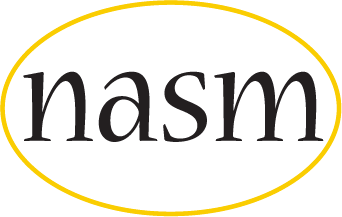Effective Grassroots Advocacy for NASM Members: Effort and Personalization Yield Results
A research report, Communicating with Congress, released by the Congressional Management Foundation (CMF) evaluates what methods of grassroots advocacy are the most effective on Capitol Hill. The study surveyed 350 staffers from 200 Congressional offices. The data have large implications for how our members can play a role in NASM lobbying efforts. A summary of the significant findings are provided here.
Findings:
- In 1995, Capitol Hill offices received less then 20 million emails. In 2006, the offices received over 313 million emails. This huge increase has taken place with virtually no increase in the number of staff managing the offices.
- Most Congressional staffers (50%) believe that identical form messages are sent without the constituent’s knowledge or approval.
- Only 3% of Congressional staffers surveyed believed that form emails have “a lot of influence”.
- 44% of Congressional staffers surveyed believed that individualized letters have “a lot of influence”.
- 34% of Congressional staffers surveyed believed that individualized emails have “a lot of influence”.
- 20% of Congressional staffers surveyed believed that phone calls have “a lot of influence”.
- 60% of Congressional staffers surveyed believed that constituent visits have “a lot of influence”.
What have we taken from this data?
- Mass emails are not effective and the maintenance of an electronic grassroots system by NASM is not cost-effective, and is likely wasteful of the resources of NASM and the time of its members.
- Focus should be on quality and not quantity.
- The more effort it takes to communicate with a Congressional office, and the more personalized the effort is from constituents, the more effective our efforts will be.
- Letters are more influential then email and phone calls.
NASM’s strategy for grassroots advocacy:
Business Card Advocacy
Collect business cards from members and prepare letters (with attached business card) for hand-delivery to Capitol Hill. All letters will be approved by the NASM member prior to delivery. A business card adds a personal touch, and due to our small size, communications are not likely to be interpreted as mass form letters as each office will only receive a few letters. Whereas we encourage members to personalize the letters, it is not as vital as if we were delivering hundreds of letters to individual offices.
Hand Delivery of Letters
The hand-delivery of letters will most often coincide with a visit to the office by the NASM president. If visits can not be arranged, or if the security measures at some offices prevent hand-delivery, the letter will be mailed through the postal service. Using the postal service with a business card will still have more impact then emails.
Year-round, Personal Fly-ins
Each NASM member is encouraged to budget money every year for at least one personal fly-in at a time that is convenient to that individual. NASM will assist members with scheduling visits to legislative offices, and the NASM president will accompany each member in most instances. Last minute arrangements are fine, and bringing your family is fine.
NASM’s small size permits us to provide these services to our members, and as the data from the CMF study proves, it is the best and most cost-effective way to influence policy developments on Capitol Hill.
If you have not yet sent NASM a stack of your business cards, please do so today. Also, please contact us if you would like to schedule your own personal fly-in.

